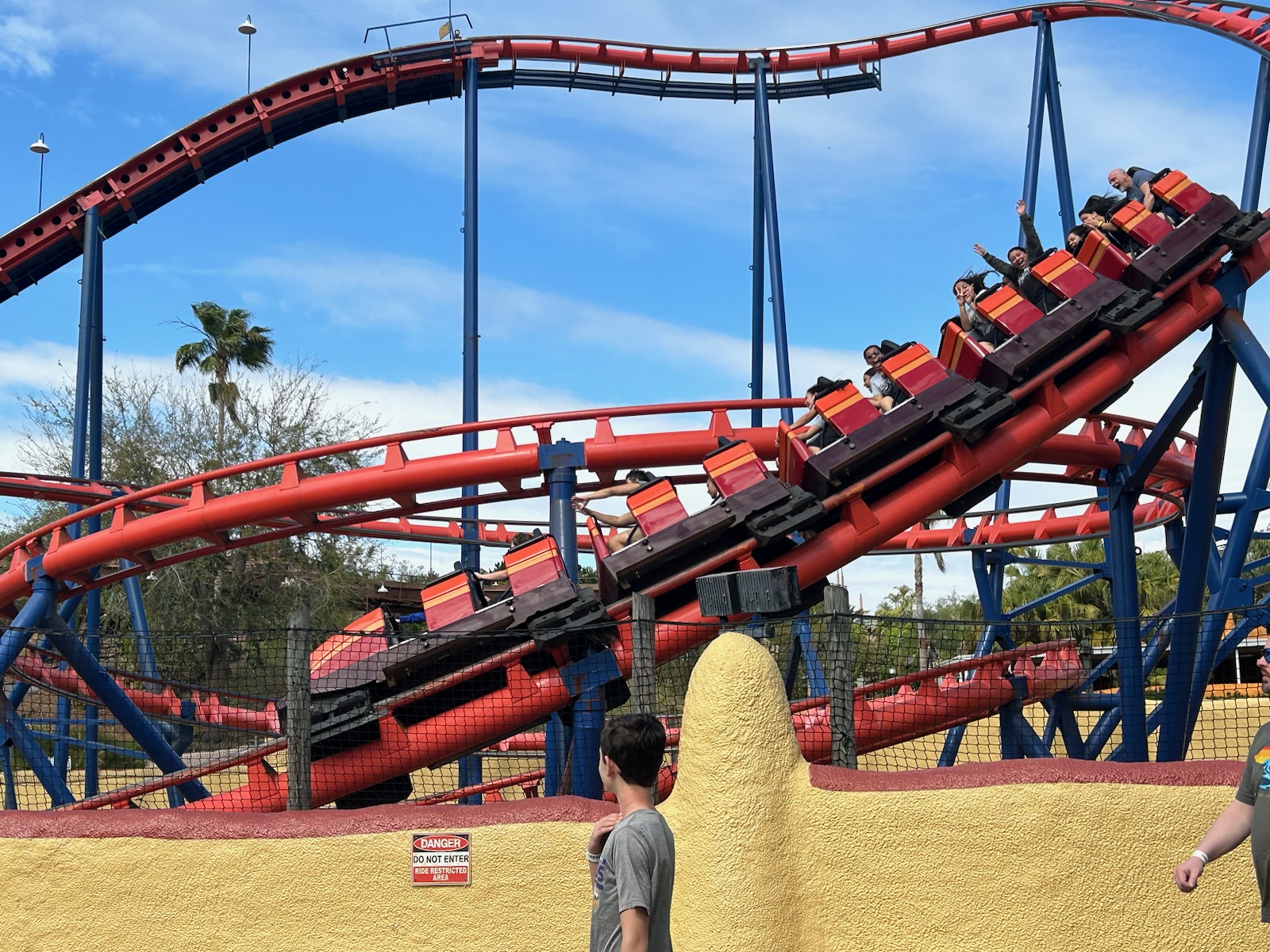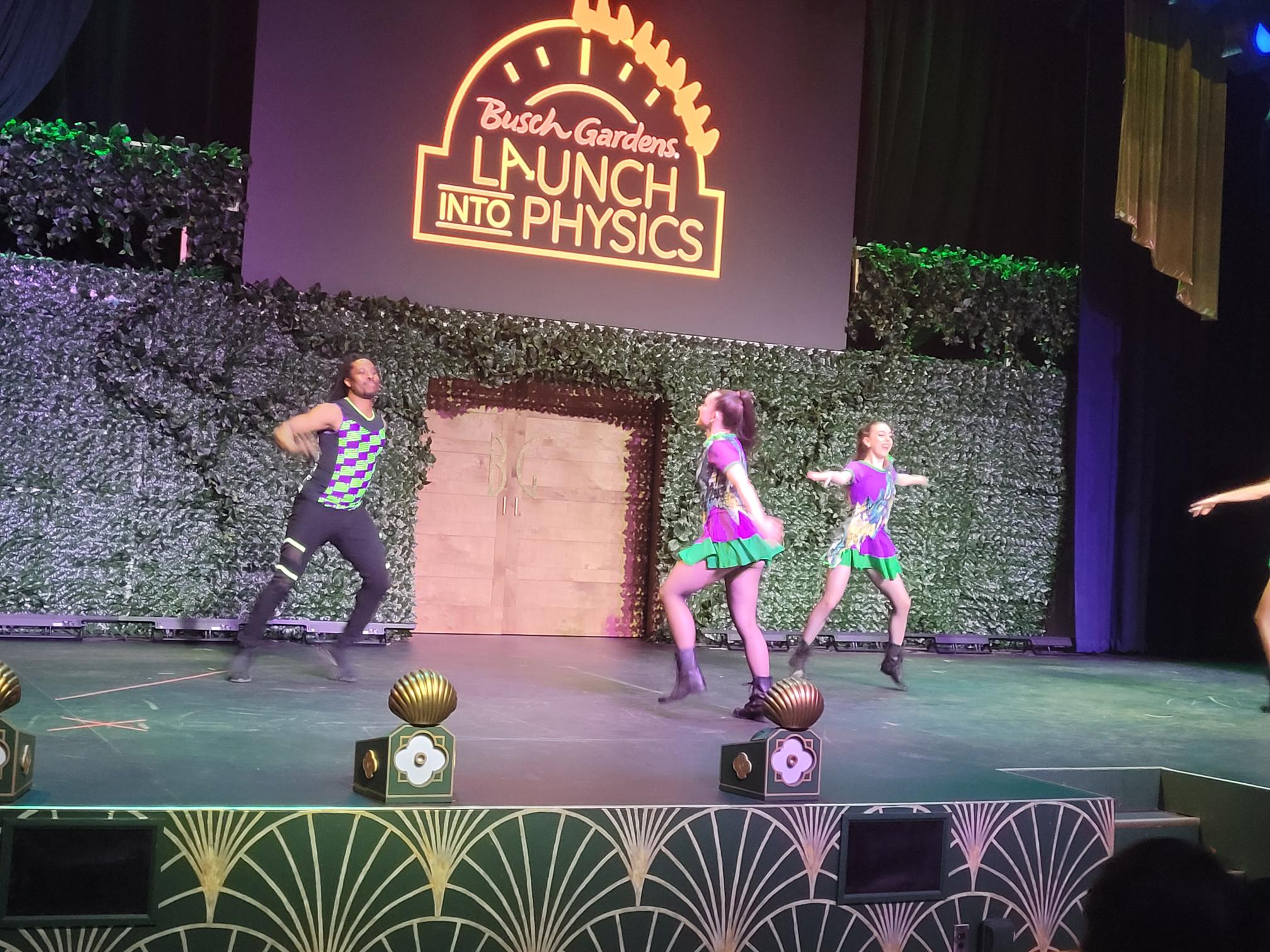
TAMPA, Florida — The 22 high schoolers at Integrity Tabernacle Christian Academy donned their school T-shirts and left at dawn for the two-hour bus trip from near Orlando to ride the roller coasters at Busch Gardens.
But they and the other school groups from many areas of the state that visited that day weren’t simply going for the thrills of whooshing down hills and looping upside down.
They were there to learn about science.
They would watch experiments that show what happens to their bodies when G-force and weightlessness take hold on SheiKra and the park’s seven other coasters.
At stations throughout the park, they could also calculate animals’ bite forces using their skull measurements and learn why certain animals can fly and what it would take for humans to have that ability.
Each year, the park celebrates Physics Day, inviting students from across the state to study motion, energy and the forces that govern them.
Alex Figueroa, principal at Integrity Tabernacle, said the staff discovered the event on the park’s website and decided to give it a try. The school paid for the trip with federal enrichment dollars and money from each student’s family.
“We wanted to provide something fun, but we also wanted it to be academic,” he said.

Figueroa isn’t alone. Many educators find themselves having to walk a fine line when it comes to activities that combine fun with learning outside the classroom.
The interest in learning by doing has only increased as more states allow parents to customize their children’s educations.
Trips to museums and community theaters and musical performances, once an integral part of schooling, fell into decline with the emphasis on high stakes testing and the Great Recession when some districts were forced to cut their budgets. The pandemic also prompted some districts to pause field trips or at least make them voluntary.
Research has shown the value of learning by doing.
A 2022 study in the Journal of Human Resources provided rigorous support for giving students cultural experiences through field trips. The study involved two groups of students. One group experienced live theater productions, art museums and symphony orchestra concerts. The control group stayed in the classroom.
The research showed that the students who went on the trips had fewer behavioral issues, were less likely to miss school, earned higher grades, and scored higher on end-of-grade exams. The study also showed long-term benefits that were most visible when the students were in middle school.
For lower-income students, the benefits can be even more profound, giving them access to experiences outside their schools and neighborhoods.
“School needs to be the venue for broadening the worlds of low-income kids,” said Jay P. Greene, a senior research fellow at the Heritage Foundation’s Center for Education Policy and a co-author of the study.
He said many schools stopped taking field trips, not so much because of money, as many are low-cost, but because of a rise in “safety-ism.”
“Something bad might happen. A kid might get lost, might do something wrong that can be seen in public,” he said. “A parent might complain about something they were exposed to. Administrators don’t want the hassle. They just want to stay in that prison and stick to their routines until they die.”
For example, he said, more than 500 school districts in the path of the recent solar eclipse canceled school, with most citing safety concerns. Greene said those districts sacrificed an important learning opportunity.
He pointed to two total eclipses, one in the southern part of England and the other in Turkey, which resulted in few eye injuries; most were minor and temporary.
“If schools were unable to distribute the protective eyewear that was widely available and avoid having students stare at the sun without that protection for 20 minutes, they would be so lacking in behavioral control that they should be permanently closed, rather than just close for that day,” he wrote in the Daily Signal. “It’s worth noting that students could also damage their eyes if they stab them repeatedly with pencils.”
That irrationality, Greene said, is helping to fuel the popularity of education choice and ESAs in particular.
“That is allowing kids to take reasonable risks of venturing into the broader world and having those experiences,” he said.
Some school districts, plagued by record post-pandemic absenteeism, have brought back field trips to help keep students engaged in school.
Pinellas County Superintendent Kevin Hendrick made them a cornerstone of a campaign to make students feel coming to school was worth it. He created a position on his leadership team dedicated to improving the student experience. By the end of the 2023-24 school year, the district received field trips requests for 15,000 more students than it did the year before.
Greene recognized that some highly motivated teachers love the opportunity to instruct their students in creative ways, but “the problem is that the profession doesn’t reward those people.”

He added that tourist attractions have seen the lucrative opportunities they offer and have upped their game to provide some educational value.
And while some trips might work out better than others, the willingness to experiment will ultimately benefit students.
“Not everything ESA kids try is great, and not everything public schools try is great,” he said. “But if tried in good faith, I think they’re worth trying.”


